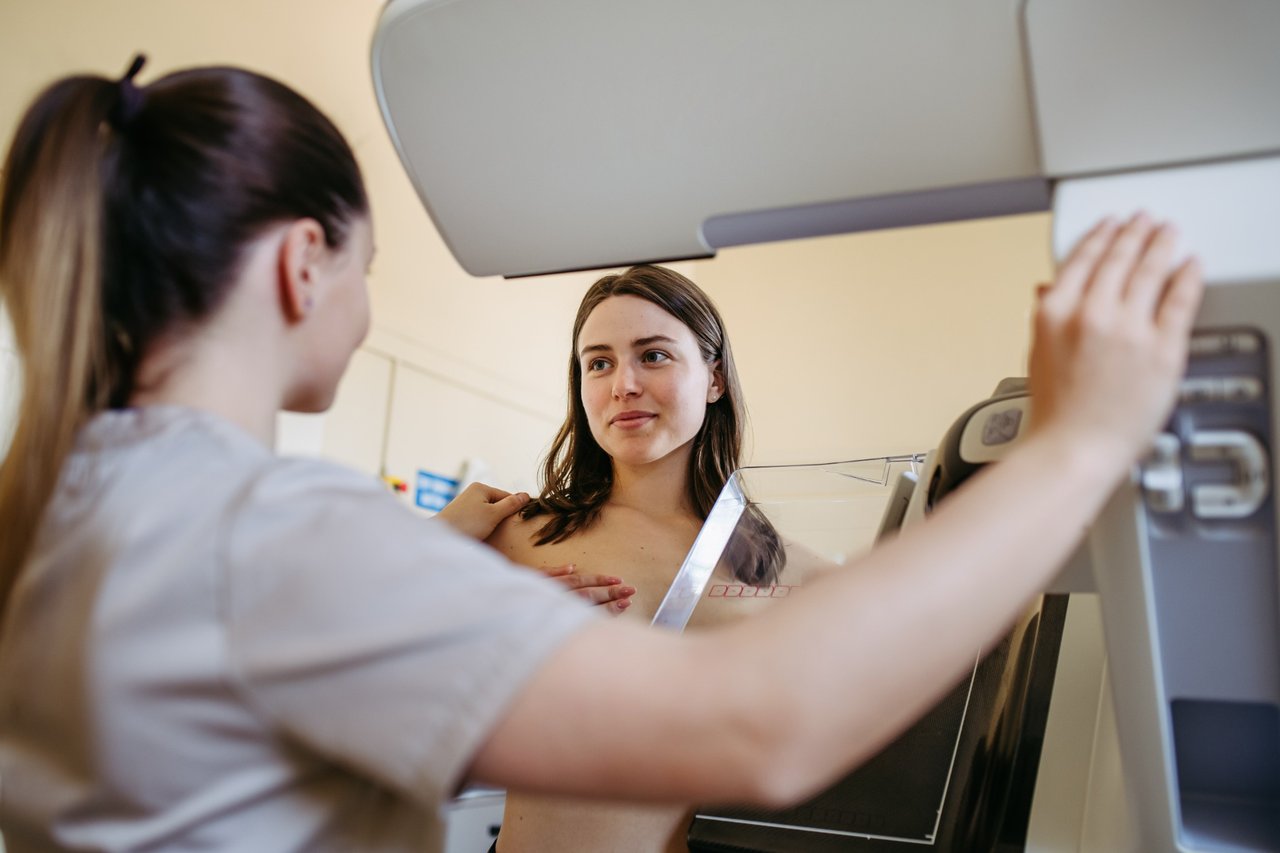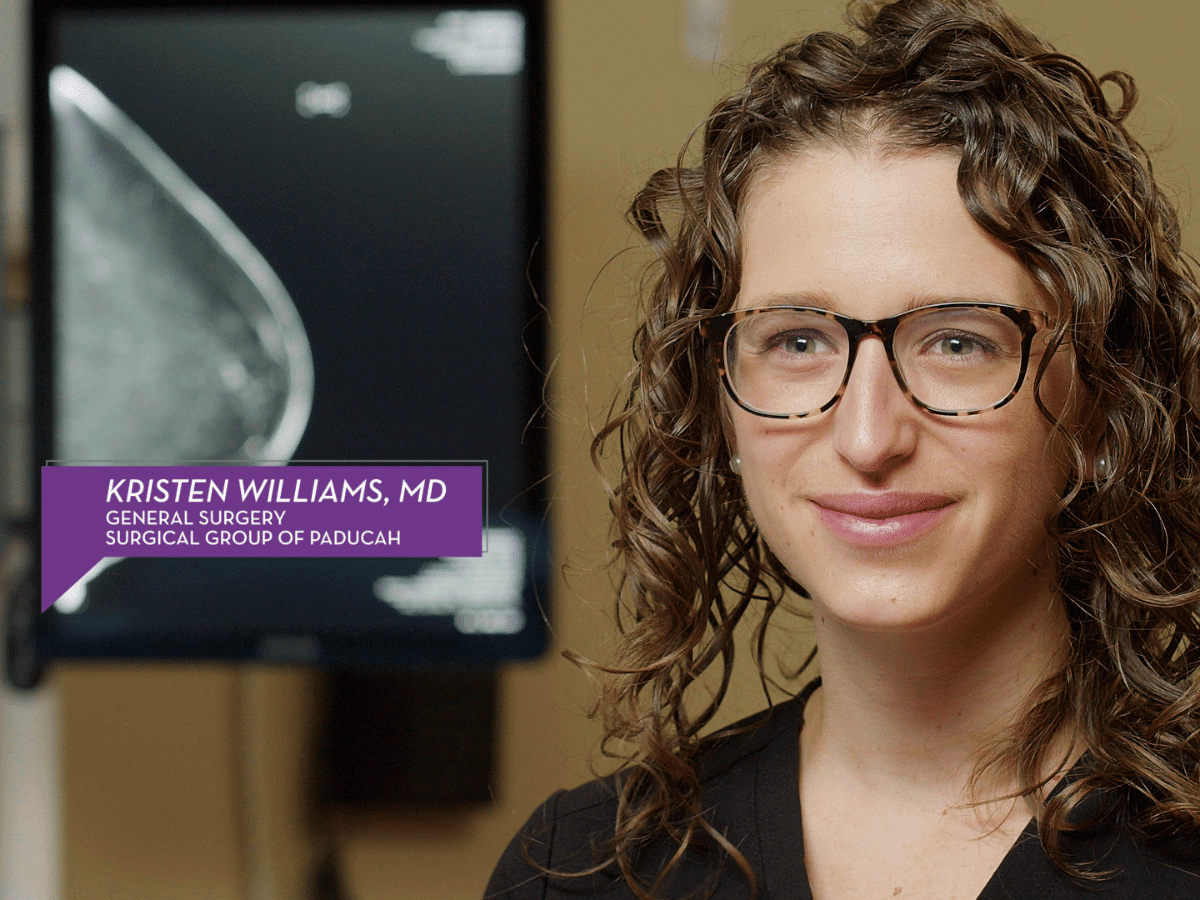What Does Breast Cancer Look Like on a Mammogram?

Mammograms are essential for detecting breast cancer early, often before a lump or other tissue change can be seen or felt. These X-rays provide detailed images, with shades of black, gray and white indicating tissue density.
This article addresses how breast cancer appears on a mammogram image. While understanding what normal and abnormal mammograms look like can be interesting and informative, it's crucial to remember that only a healthcare provider trained to analyze mammograms can definitively determine if the images show healthy tissue, benign (noncancerous) formations or cancer.
What Does a Normal Mammogram Look Like?
In a typical mammogram, the background appears black. Breast tissue is shown in shades of gray and white. Denser tissues, such as connective tissue and glands, are white, whereas less dense tissues, like fat, appear gray.
A mammogram of healthy breast tissue is usually predominantly gray with some white areas. Benign breast conditions, such as cysts (small fluid-filled sacs) and fibroadenomas (benign tumors), typically appear as round or oval patches with distinct, clear borders. Most calcifications—tiny, bright white spots—are also benign, especially as women age.
Identifying Cancer in Mammograms
Breast cancer often appears as a concentrated white area on a mammogram, indicating high-density tissue. This could be a lump or tumor, and its appearance can include shades of gray. Radiologists, who specialize in evaluating medical imagery, carefully assess the size, shape and edges of any white areas to determine if they are suspicious.
Specific features that might indicate breast cancer include:
Masses
“Mass” is the generic term for lumps or growths. It covers conditions such as tumors, cysts and fibroadenomas. Cancerous masses are typically denser than fat and appear lighter gray or white. For example, invasive ductal carcinoma often appears as a white patch or mass with fuzzy or spiky edges that differentiate it from other structures in breast tissue.
Calcifications
As noted above, most calcifications are benign. However, radiologists sometimes identify specific patterns that are concerning. Tight clusters or lines of microcalcifications (white specks) can be a significant indicator of breast cancer, including ductal carcinoma in situ (DCIS), which frequently has that appearance.
Asymmetries
Breast tissue that has a distorted shape or an unusual pattern without a clearly defined mass typically warrants additional scrutiny. It can signify a benign condition but may also be a subtle sign of cancer. For instance, invasive lobular cancer can be challenging to detect as it can appear as an area of what’s called architectural distortion rather than a distinct mass.
Diagnostic Challenges With Dense Breast Tissue
Some women have a higher percentage of fibrous and glandular tissue in their breasts, which is more dense than fatty tissue. Because dense tissue appears white on mammograms, there is a risk that it could hide cancerous tissues.
Radiologists use a combination of expertise, advanced imaging techniques and additional tests, if needed, to accurately assess mammograms for women with dense breast tissue.
Talk With Your Healthcare Provider About Breast Cancer and Mammograms
Mammograms are crucial imaging procedures that provide insight into the health of breast tissue. You should get yours as recommended by your healthcare provider.
However, it’s critical to remember that interpreting mammograms requires the expertise of a trained healthcare professional. They consider visual cues along with your medical history and other diagnostic information to provide a comprehensive assessment.
If you have questions about mammograms or the resulting images, your healthcare provider can answer them. You can use our online directory to find a Baptist Health provider if you don’t have one.
Next Steps and Helpful Resources
Learn More About Cancer Care at Baptist Health
What Color Is Breast Cancer Discharge?
What Does Breast Cancer Look Like?
Breast Cancer and Exercise: Can Working Out Lower Your Risk?



